We have the wheel weight assortment you need to get the job done right.
Adhesive Wheel Weight Removal Tool, Material Plastic, Used For To Remove Adhesive Wheel Weights
View Full Product Details
Adhesive Wheel Weight Removal Tool, Material Plastic, Used For To Remove Adhesive Wheel Weights
View Full Product Details
Clip-On Wheel Weight, Uncoated, 0.50 oz., 0.8 x 0.623 In., Lead, For Use On Light Truck
View Full Product Details
$12.84
Clip-On Wheel Weight, Uncoated, 0.
50 oz., 0.8 x 0.623 In., Lead, For Use On Light Truck
View Full Product Details
Clip-On Wheel Weight, P Series Uncoated, 1.75 oz., 3.2 x 0.65 In., Lead, For Use On Passenger Car
View Full Product Details
$25.88
Clip-On Wheel Weight, P Series Uncoated, 1.75 oz., 3.2 x 0.65 In., Lead, For Use On Passenger Car
View Full Product Details
Wheel Weight, Uncoated Lead Adhesive, 3 oz., 6.12 x 0.5 In., Lead, For Use On Passenger Car & Motorcycles
View Full Product Details
$45.93
Wheel Weight, Uncoated Lead Adhesive, 3 oz.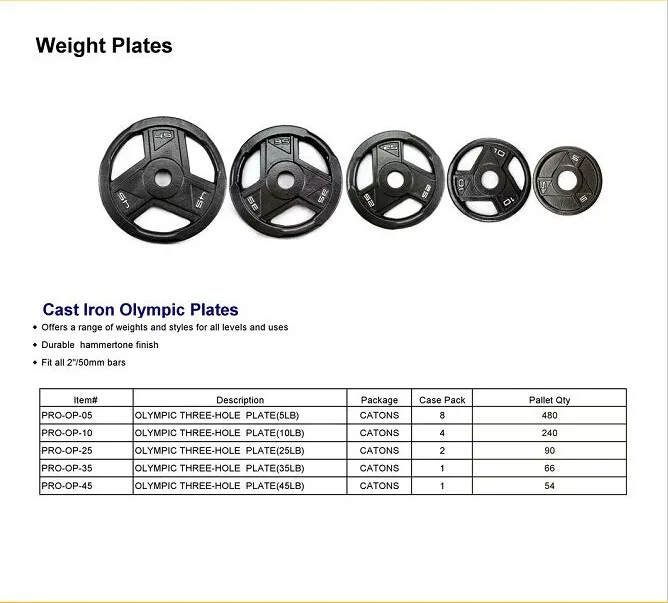 , 6.12 x 0.5 In., Lead, For Use On Passenger Car & Motorcycles
, 6.12 x 0.5 In., Lead, For Use On Passenger Car & Motorcycles
View Full Product Details
Clip-On Wheel Weight, P Series Uncoated, 1.5 oz., 2.88 x 0.65 In., Lead, For Use On Passenger Car
View Full Product Details
$22.13
Clip-On Wheel Weight, P Series Uncoated, 1.5 oz., 2.88 x 0.65 In., Lead, For Use On Passenger Car
View Full Product Details
Clip-On Wheel Weight, P Series Uncoated, 0.75 oz., 1.53 x .0.65 In., Lead, For Use On Passenger Car
View Full Product Details
$12.81
Clip-On Wheel Weight, P Series Uncoated, 0. 75 oz., 1.53 x .0.65 In., Lead, For Use On Passenger Car
75 oz., 1.53 x .0.65 In., Lead, For Use On Passenger Car
View Full Product Details
Wheel Weight, 0.25 oz., 7" x 3.5" x 2.5", Steel, Number of Pieces 576, Adhesive, Package Quantity 48
View Full Product Details
$39.75
Wheel Weight, 0.25 oz., 7" x 3.5" x 2.5", Steel, Number of Pieces 576, Adhesive, Package Quantity 48
View Full Product Details
Clip-On Wheel Weight, PZU Series, 0.50 oz., 2.407 x 0.475 In., Zinc, For Use On Passenger Car
View Full Product Details
$13.91
Clip-On Wheel Weight, PZU Series, 0. 50 oz., 2.407 x 0.475 In., Zinc, For Use On Passenger Car
50 oz., 2.407 x 0.475 In., Zinc, For Use On Passenger Car
View Full Product Details
Clip-On Wheel Weight, PZU Series, 1 oz., 2.728 x 0.575 In., Zinc, For Use On Passenger Car
View Full Product Details
$13.39
Clip-On Wheel Weight, PZU Series, 1 oz., 2.728 x 0.575 In., Zinc, For Use On Passenger Car
View Full Product Details
Adhesive Wheel Weight, h461 Series, 25g., 5.75 x 8.5 In., Zinc, Number of Pieces 100, Single Piece Adhesive, For Use On Light-Duty Truck, Passenger Car, Package Quantity 100
View Full Product Details
$231. 09
09
Adhesive Wheel Weight, h461 Series, 25g., 5.75 x 8.5 In., Zinc, Number of Pieces 100, Single Piece Adhesive, For Use On Light-Duty Truck, Passenger Car, Package Quantity 100
View Full Product Details
Wheel Weight Rack
View Full Product Details
$793.83
Wheel Weight Rack
View Full Product Details
Clip-On Wheel Weight, PZU Series, 2.50 oz., 4.829 x 0.675 In., Zinc, For Use On Passenger Car
View Full Product Details
$25.20 5% off
$23.81
Clip-On Wheel Weight, PZU Series, 2. 50 oz., 4.829 x 0.675 In., Zinc, For Use On Passenger Car
50 oz., 4.829 x 0.675 In., Zinc, For Use On Passenger Car
View Full Product Details
Compare
Representative Image
Compare
Representative Image
Compare
Compare
Representative Image
Compare
Compare
Compare
Representative Image
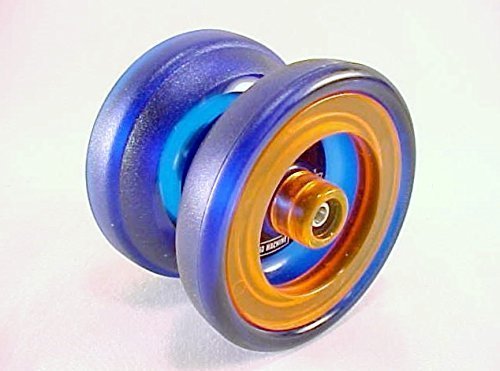 75 Ounce Wheel Weight
75 Ounce Wheel Weight Compare
Representative Image
Compare
Representative Image
Compare
Representative Image
Compare
Compare
Representative Image
Compare
Compare
Representative Image
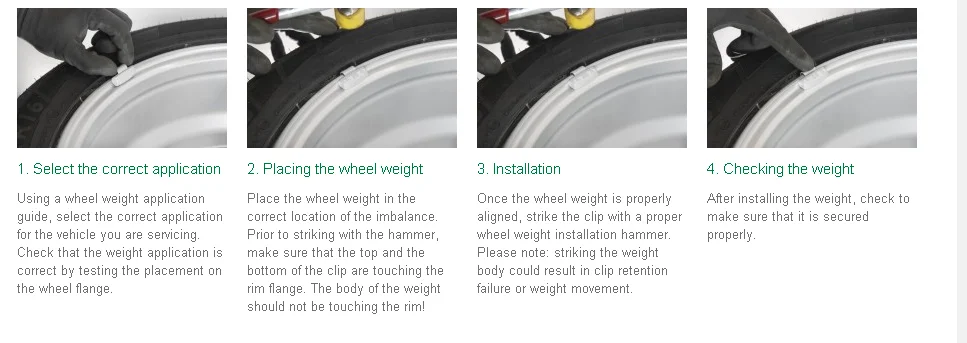 25 Ounce Wheel Weight
25 Ounce Wheel Weight Compare
Compare
Representative Image
Compare
Representative Image
Compare
Compare
Compare
 5 Ounce Wheel Weight
5 Ounce Wheel Weight Compare
Fendt News
As part of the new Fendt 500 tractor series, AGCO / Fendt offers tractors that comply with the Stage 4 / Tier 4 Final European emission standard . By analogy with the known technology used for large tractors 700-900 Vario, Fendt now also uses electronically controlled exhaust gas recirculation (EGR) with parametrically controlled AdBlue injection and an additional oil cooler on the 500 Vario. With this technology package, AdBlue consumption can be reduced by up to 50 percent compared to the predecessor model. The 4.04 liter Deutz four-cylinder engine with CommonRail injection and proven Fendt SCR technology combined with a diesel particulate filter (CSF) provides an efficient and economical solution with passive regeneration without additional injection into the exhaust system.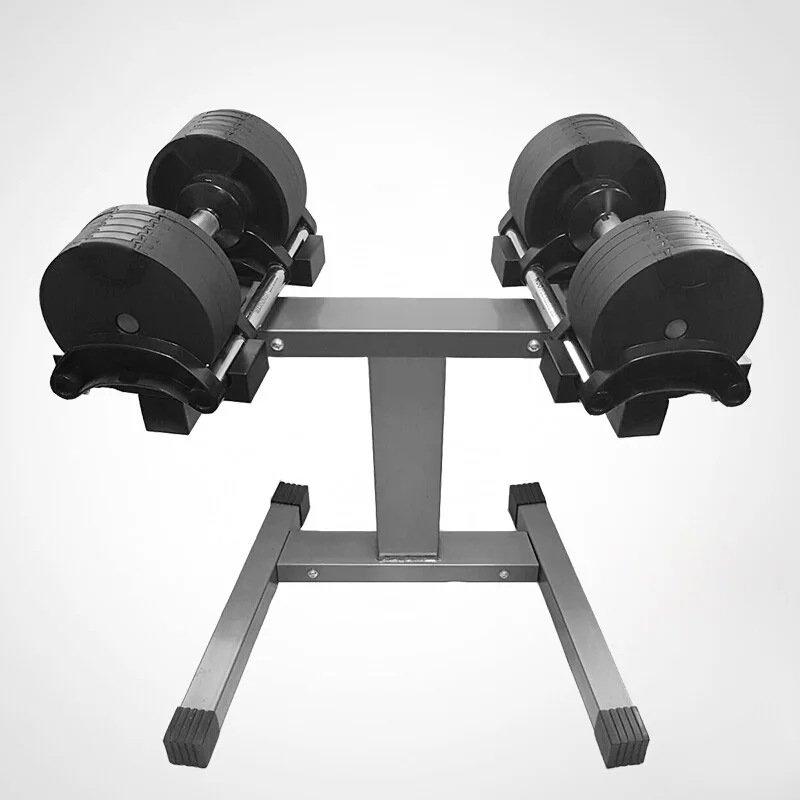
With the new Fendt 500 Vario tractor, AGCO/Fendt now offer the new VarioGuide automatic steering system in the Professional Plus variant, which was previously only available for more powerful tractors. With the new VarioGuide system, the user has the option of choosing between two different receivers depending on requirements and local conditions. The NovAtel receiver is available as an entry-level version with EGNOS/WAAS correction services, RTK over radio, or NTRIP. The Trimble receiver supports other services such as RTX™ and CenterPoint RTX™ in addition to the well-known EGNOS/WAAS, RTK over radio and NTRIP correction services. With Trimble xFill™ technology, signal loss of up to 20 minutes can be overcome. Depending on the automatic steering system and correction services, VarioGuide can work with an accuracy of 20 cm to 2 cm.
All tractor and implement functions are controlled from one terminal, the Varioterminal from Fendt. The well-known 7-B and 10.4-B 500 Vario terminals in smartphone format are now also available in the Fendt 500 Vario. They are characterized by intuitive operation using combined touch and key elements. Thanks to the new ball joint attachment, the terminal can be flexibly adjusted. The terminals provide crisp resolution with LED backlighting and a scratch-resistant, easy-to-clean solid glass surface. With the Varioterminal 7-B, in addition to controlling basic tractor functions, ISOBUS-compatible implements can also be controlled and the VariotronicTI headland control can be programmed. Terminal 10.4-B also includes two camera ports, the Vario Guide automatic steering system, VarioDocPro documentation and Bluetooth data transfer in one device. The display on the Varioterminal 10.4-B can be done in three different modes as desired. This is either a full screen image, split screen view or four separate windows. Even in night mode, high resolution and clear images are guaranteed. The ProfiPlus version is supplied as standard with the Varioterminal 10.
The well-known 7-B and 10.4-B 500 Vario terminals in smartphone format are now also available in the Fendt 500 Vario. They are characterized by intuitive operation using combined touch and key elements. Thanks to the new ball joint attachment, the terminal can be flexibly adjusted. The terminals provide crisp resolution with LED backlighting and a scratch-resistant, easy-to-clean solid glass surface. With the Varioterminal 7-B, in addition to controlling basic tractor functions, ISOBUS-compatible implements can also be controlled and the VariotronicTI headland control can be programmed. Terminal 10.4-B also includes two camera ports, the Vario Guide automatic steering system, VarioDocPro documentation and Bluetooth data transfer in one device. The display on the Varioterminal 10.4-B can be done in three different modes as desired. This is either a full screen image, split screen view or four separate windows. Even in night mode, high resolution and clear images are guaranteed. The ProfiPlus version is supplied as standard with the Varioterminal 10. 4-B.
4-B.
The Fendt 500 Vario's particularly efficient transfer of power from the engine to the PTO is achieved by direct power transfer. The optional 1000E rear PTO complements the existing range of three 540, 540E and 1000 PTOs for a variety of applications. With the optional rear PTO 1000E, high-speed implements can be driven particularly economically while reducing power consumption, so that the scope of the tractor is extended. At the same time, according to the results of our own research, up to 7 percent of fuel can be saved when using a power take-off shaft.
The Fendt 500 Vario features a compact design, excellent maneuverability and a wide range of equipment. Thanks to the low empty weight of 6.1 t and the high payload of 4.4 t, combined with a 1 t increase in the rear axle load of 8.5 t, the tractor provides a high load when working with mounted implements. The permissible total weight is 10.5 t. To meet the requirements of international markets, the Fendt 500 Vario is supplied with a split axle as well as a stub axle so that the track width can be flexibly adjusted. The front loader developed by Fendt is available from the factory in two different versions: Fendt Cargo or Fendt CargoProfi. The Fendt CargoProfi additionally features scale, vibrator and memory functions. For example, you can limit the lift height at low travel heights.
The permissible total weight is 10.5 t. To meet the requirements of international markets, the Fendt 500 Vario is supplied with a split axle as well as a stub axle so that the track width can be flexibly adjusted. The front loader developed by Fendt is available from the factory in two different versions: Fendt Cargo or Fendt CargoProfi. The Fendt CargoProfi additionally features scale, vibrator and memory functions. For example, you can limit the lift height at low travel heights.
The well-known VisioPlus cab with curved windshield has been modified in some parts. The new windshield wiper (300 degrees) with an extended field of action provides an optimal view of the inlet pipes and the front loader even in bad weather. The Profi and ProfiPlus versions are fitted as standard with 300 degree windshield wipers. Perfect visibility is also ensured by the modern lighting design of the Fendt 500 Vario, which now additionally allows the LED work lights to be reprogrammed and thus ensures efficient lighting. Thus, thanks to the crossed beams, a good view of the implements and wheel arches is provided. Over 37,000 lumens of LED bulbs provide low power consumption and long life. For the first time, the comfortable Evolution Dynamic Dual Motion seat is available with genuine leather upholstery for the driver's seat, passenger seat and steering wheel. The backrest of the Dual Motion seat adapts to the driver's movements and supports his back. In this way, turning backwards when working with the rear linkage is comfortably and ergonomically supported. For added comfort, the seat is equipped with a dynamic damper, seat air conditioning and a heating system. Another innovation is that the Fendt 500 Vario features an electronic immobilizer for the first time.
Thus, thanks to the crossed beams, a good view of the implements and wheel arches is provided. Over 37,000 lumens of LED bulbs provide low power consumption and long life. For the first time, the comfortable Evolution Dynamic Dual Motion seat is available with genuine leather upholstery for the driver's seat, passenger seat and steering wheel. The backrest of the Dual Motion seat adapts to the driver's movements and supports his back. In this way, turning backwards when working with the rear linkage is comfortably and ergonomically supported. For added comfort, the seat is equipped with a dynamic damper, seat air conditioning and a heating system. Another innovation is that the Fendt 500 Vario features an electronic immobilizer for the first time.
The new Fendt 500 Vario has been introduced to the North American market for the first time ever. On August 25, 2015, the series was first presented at the AG Progress Show in Pennsylvania.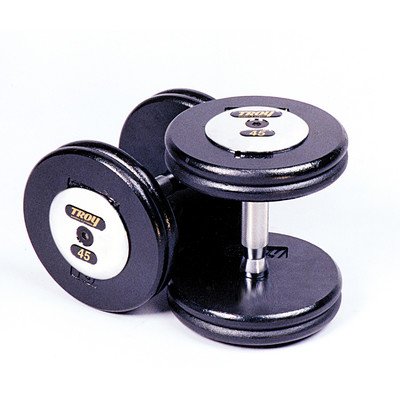 On February 10, 2016 at the National Farm Machinery Show in Louisville, Kentucky, he was awarded the AE 50 by the American Society of Agricultural and Biotechnical Engineers (ASABE). The award was given to tractors of the series for innovations previously known only for large tractors, such as the control concept with the Varioterminal terminal, the VarioGuide automatic steering system and the VarioDoc documentation system.
On February 10, 2016 at the National Farm Machinery Show in Louisville, Kentucky, he was awarded the AE 50 by the American Society of Agricultural and Biotechnical Engineers (ASABE). The award was given to tractors of the series for innovations previously known only for large tractors, such as the control concept with the Varioterminal terminal, the VarioGuide automatic steering system and the VarioDoc documentation system.
For inquiries please contact:
Fendt Press Office / PR
Phone: +49 (0) 8342 / 77 - 343
Email: [email protected]
Website: www. fendt.com
Sepp Nuscheler (Mobile): +49 (0) 171 / 41 35 58 1
Manja Morawitz (Mobile): +49 (0) 151 / 18 03 38 43
Each of us knows well that you need to change tires for a car twice a year. For the cold season, you need one tire, for the summer, completely different. As a rule, for most motorists, this is where knowledge about changing seasonal tires ends. Some still know that there are still all-season tires, and that, supposedly, by putting such tires, you can generally solve all your problems in one fell swoop. It is very important for every driver to understand that you need to take tire changes for your car seriously. Not only the noise level in the cabin depends on the type of tires, but also the quality of grip on the road!
For the cold season, you need one tire, for the summer, completely different. As a rule, for most motorists, this is where knowledge about changing seasonal tires ends. Some still know that there are still all-season tires, and that, supposedly, by putting such tires, you can generally solve all your problems in one fell swoop. It is very important for every driver to understand that you need to take tire changes for your car seriously. Not only the noise level in the cabin depends on the type of tires, but also the quality of grip on the road!
It is impossible to drive on winter tires in the summer and, moreover, it is dangerous to use summer tires in the cold season. But if it’s even more or less easy to figure out the seasons, then the question is: what tires does your car need? Depending on the region, seasonal temperatures and weather conditions can be very different. Somewhere the average summer temperature is 42 degrees, and somewhere 312 rainy days a year. If you want to find the best type of rubber, you will have to try different options anyway, but you still need to have an idea of \u200b\u200bwhat to choose from. That's exactly what we're going to talk about today.
That's exactly what we're going to talk about today.
A brand is what each of us pays attention to when choosing any product. And this is not surprising, because in many ways a brand is a kind of quality criterion. And price-quality, as you know, is a universal formula in choosing any product. Tires in this case are no exception. When it comes to car tires, there is no consensus on the “best” brand. There are really a lot of manufacturers. You can buy inexpensive domestic tires from us, as well as tires from world-famous manufacturers like Goodyear or Bridgestone. Everyone chooses, depending on their capabilities and preferences.
It is worth saying, however, that for cars of the budget and middle class there is no significant difference in the quality of tires from different manufacturers. Such a domestic brand as Belshina, for example, produces solid and quite modern tires, including those with an asymmetric tread pattern. To bring some clarity for those who do not understand brands at all, we will briefly list the most popular ones.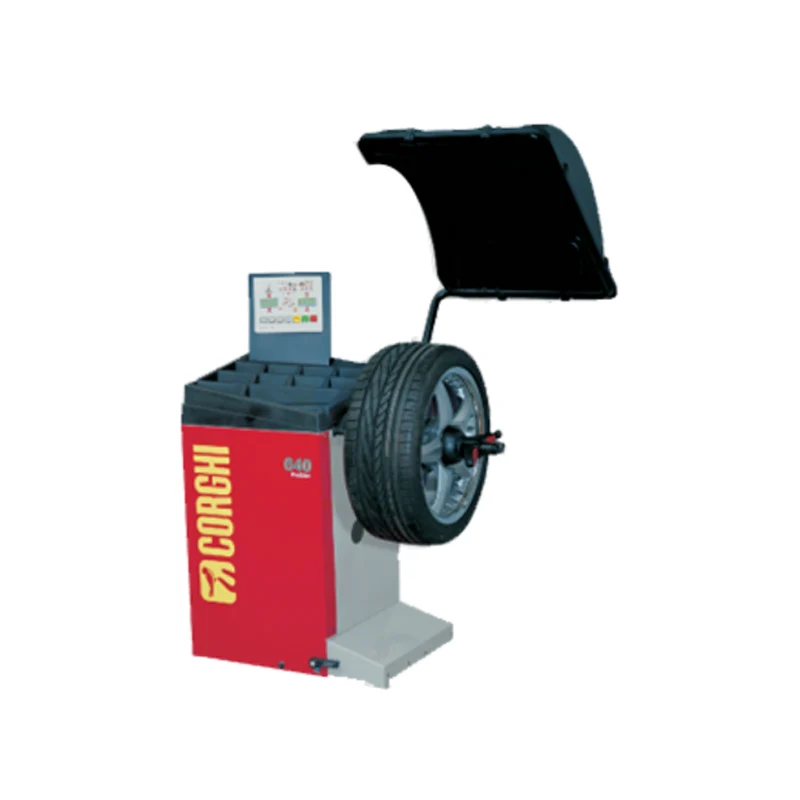
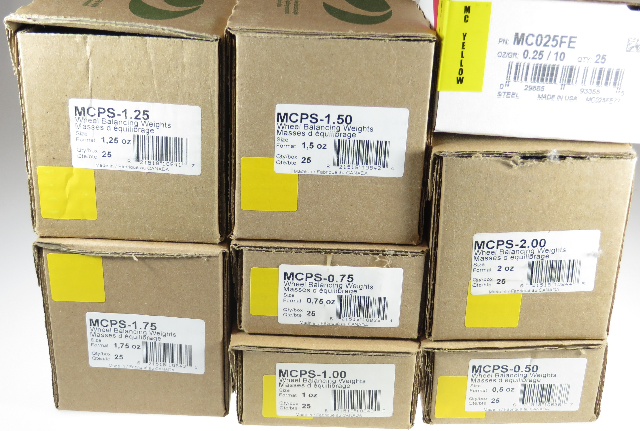 More than 160 factories on 4 continents produce tires for almost all types of road and aviation transport. Goodyear sports tires are very popular.
More than 160 factories on 4 continents produce tires for almost all types of road and aviation transport. Goodyear sports tires are very popular. 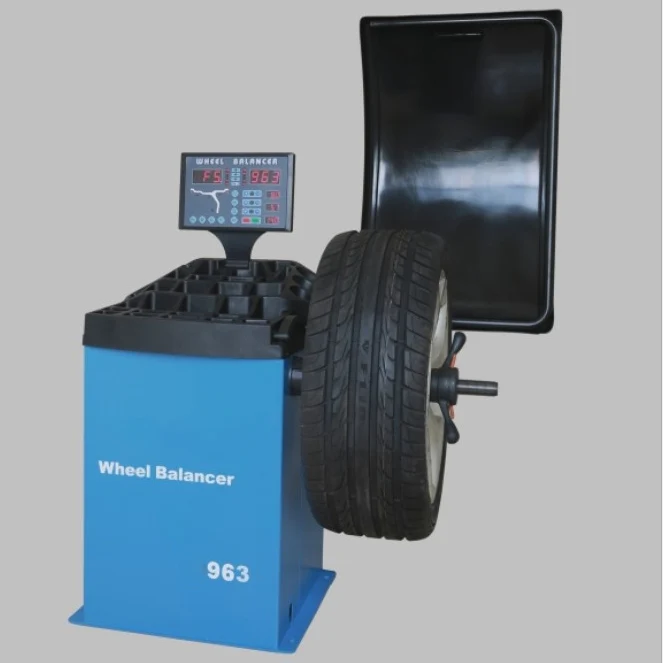
In general, there are a lot of brands that produce tires. We have cited only the most popular as an example.
Almost all car tires have various designations. An inexperienced motorist is not always able to figure out what this or that indicator says. In this figure, the marking details that are most common. Let's talk about each in more detail.
Size - an indicator that is on all tires. It looks something like this: 195/65 R15. The first digit is the profile width in millimeters. The second is the ratio of the height of the rubber to its width, expressed as a percentage (profile series). Further, the letter designation is the type of tire (radial / diagonal). The third digit is the mounting diameter. Sometimes, after the indicator of the mounting diameter, the Latin letter C is indicated on the tires. This is an abbreviation for "Cargo". This designation indicates that you have a commercial vehicle tire in front of you. That is, such tires are designed for light trucks and minibuses. In general, in the documentation for the car, the manufacturer always indicates a certain limiting range of standard sizes for your car. Tires always choose exclusively from the proposed options.
Sometimes, after the indicator of the mounting diameter, the Latin letter C is indicated on the tires. This is an abbreviation for "Cargo". This designation indicates that you have a commercial vehicle tire in front of you. That is, such tires are designed for light trucks and minibuses. In general, in the documentation for the car, the manufacturer always indicates a certain limiting range of standard sizes for your car. Tires always choose exclusively from the proposed options.
Profile width is a rather important indicator. The wider the tire, the larger the grip patch of the tire with the road. It is important to just remember that wide tires are good for summer tires, and narrow tires are good for winter. The undoubted advantage of wide tires is faster acceleration and shorter braking distances. In addition, wide tires have better dynamic characteristics. For this reason, this type of tire is also recommended for sports car drivers. The disadvantages of wide tires are higher fuel consumption and the appearance of hydroplaning at low speeds.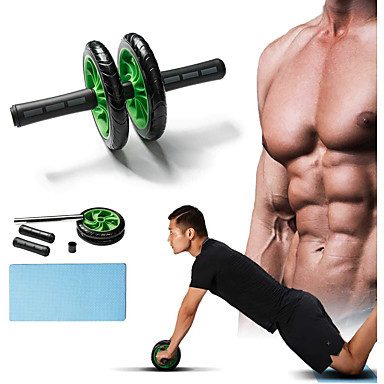
Profile height (series) is another important indicator. The lower the profile, the better the handling. At the same time, low profile tires are more vulnerable on bad roads, and the chances of wheel damage increase. So, if you need high reliability at high speeds, and good quality of the roads you will be driving on, you are also sure, feel free to choose low-profile tires with a height of 55 or less. If you often have to drive on dirt roads, then high-profile tires with a rating of 75-80 will be a more reliable option. At the same time, keep in mind that high profile tires are nowhere near as good at high speeds and tight corners. Tires with a height rating greater than 85 are full profile tires designed for off-road driving.
The letter designation R indicates that this is a radial tire type. Diagonal tires for passenger cars are now practically not produced.
The mounting diameter on all tires is indicated in inches.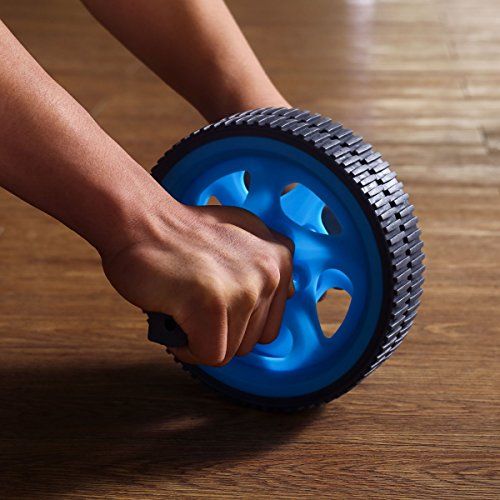 This figure should match the size of your rims. Otherwise, the purchased tires will simply be useless, and they will have to be changed.
This figure should match the size of your rims. Otherwise, the purchased tires will simply be useless, and they will have to be changed.
Load and speed indices are also indicated on almost all tires. These are quite important numbers that you also need to pay attention to when choosing rubber.
Load index is always a two-digit number. Each number corresponds to a certain level of load in kilograms per wheel. You never know what you'll be hauling, so choose a set of tires that can handle a significant amount of extra weight.
Speed index is always indicated in Latin letters. Each corresponds to a certain maximum allowable limit, measured in km / h. Typically, tire manufacturers specify this maximum limit with some margin. At the same time, professionals recommend not only not to exceed this threshold, but also try not to bring the maximum speed closer to the limit at all. Remember the highest speed that you usually allow yourself on country roads, add 20 and buy tires with that speed index. If 160 is your normal maximum, then the S index will suffice.
If 160 is your normal maximum, then the S index will suffice.
Other markings
In fact, there are as many varieties of markings as there are varieties of wheeled vehicles. There are designations for off-road and construction vehicles, for tractors, scrapers and truck cranes. The labeling of tires intended for sale in Anglo-American geographic areas may also differ. If you encounter non-standard designations, ask the seller what this indicator means.
It is well known that the same manufacturer may have several different tire models for the same conditions. Usually they differ only in the tread pattern. In this case, the question arises, how important is the geometry of the pattern on car tires? Let's start with the fact that the world's leading companies spend tens of millions of dollars to develop and test new designs. And, yes, a lot really depends on the geometry of the notches. Experienced motorists can tell you by the tread pattern what conditions the tire is designed for.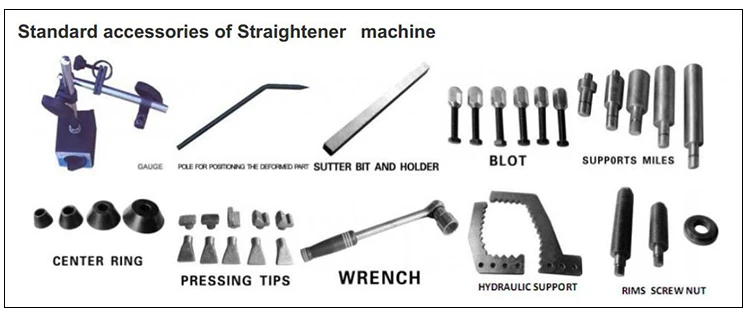 What you need to know in order to independently choose tires for your car? There are three main types of drawing:
What you need to know in order to independently choose tires for your car? There are three main types of drawing:
Symmetrical Non-Directional Pattern is a classic tire pattern geometry. This type is usually used in the budget segment of tires. Tires with a symmetrical non-directional pattern are somewhat versatile. They can be moved from one wheel to another in any order, they have good dry grip and good drainage. In addition, they are inexpensive, which is why they are well-known popularity. Buying tires with such a pattern can be recommended to those who prefer a calm driving style and low speeds.
Symmetrical directional pattern is a v-shaped notch geometry. Tires with this type of pattern have two major advantages. Firstly, they are great for driving in rain and slush, as they perfectly remove water from the tire's grip patch with the road surface. Secondly, the symmetrical directional serration pattern provides the best traction at high speeds. It is tires with such a tread that are recommended for owners of sports cars. When installing such tires, it is important to observe the correct direction. It is easy to find a special marker on the side of the tire. It usually looks like an arrow.
Secondly, the symmetrical directional serration pattern provides the best traction at high speeds. It is tires with such a tread that are recommended for owners of sports cars. When installing such tires, it is important to observe the correct direction. It is easy to find a special marker on the side of the tire. It usually looks like an arrow.
The asymmetrical pattern is marketed as a superior alternative to the symmetrical non-directional pattern. The peculiarity of such rubber is that the tire is divided into two parts. Winter tires use a classic pattern on the outside that provides good grip on paved surfaces, while the pattern on the inside is adapted to driving on snow and slush. In the summer version, tires with an asymmetric pattern are designed to provide maximum efficiency when maneuvering. Asymmetric tires tend to cost more than conventional tires, and it's hard to say how much this is justified in terms of the difference in performance benefits.
Each type of tire adapts to some narrow temperature range, as well as a certain type of coating. Golden rule number 1 - rubber ideal for all conditions and seasons does not exist! The second automatic rule follows from the first rule: the higher the declared versatility, the worse such tires behave in individual conditions. That is, an all-round tire will never be the best on a dry road, or on narrow city streets, or on a highway, or anywhere else.
Golden rule number 1 - rubber ideal for all conditions and seasons does not exist! The second automatic rule follows from the first rule: the higher the declared versatility, the worse such tires behave in individual conditions. That is, an all-round tire will never be the best on a dry road, or on narrow city streets, or on a highway, or anywhere else.
You may be surprised, but professionals generally do not recommend buying tires labeled "all season". Why? Because such tires are nothing more than summer tires adapted to near-zero temperatures. The temperature range for all-weather tires is from -5 C to +10 C, and for difficult road conditions (snow, rain, ice) they are designed a little better than summer tires. What to do? Ride on summer tires in the summer, and on winter tires in the cold season.
All season tires
There is a fairly common stereotype that winter and summer tires differ only in the tread pattern. In no case! Rubber is a material that changes its properties quite quickly with temperature changes. Leave an ordinary washing eraser in the cold for a long time and see what happens to it. It can literally be broken in half. The same processes affect the tires of your car. Of course, manufacturers have foreseen this, which is why the chemical composition of tires for different seasons is very different.
In no case! Rubber is a material that changes its properties quite quickly with temperature changes. Leave an ordinary washing eraser in the cold for a long time and see what happens to it. It can literally be broken in half. The same processes affect the tires of your car. Of course, manufacturers have foreseen this, which is why the chemical composition of tires for different seasons is very different.
Generalized temperature limits for car tires are not prescribed anywhere, but we can confidently talk about the following indicators:
 These can be installed in early spring or late autumn, but, as we already wrote, this is a dubious option, because they still cannot become a full-fledged replacement for summer or winter tires.
These can be installed in early spring or late autumn, but, as we already wrote, this is a dubious option, because they still cannot become a full-fledged replacement for summer or winter tires. Thus, the temperature limit is a very important property for car tires.
Winter is a rather difficult season for European roads. The weather in winter can change very often, and temperature fluctuations can be very severe. During the week, we can get rain, snow, ice, and squeaky frost after the thaw from Mother Nature. So which option is still to stop?
Usually, drivers pay attention to the price, brand, pattern and tread depth. For northern regions with frequent snowfalls and prevailing low temperatures, sometimes you have to choose between studded and non-studded tires. You need to choose tires for your driving style and weather conditions, which usually correspond to your geographic region. At the same time, you need to be aware that in any case you will have to compromise.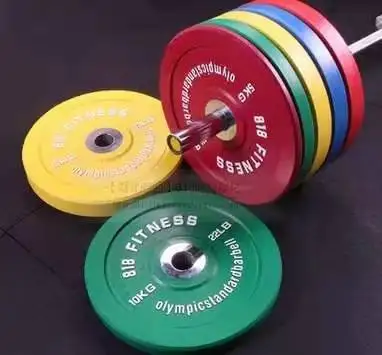 Winning in one thing, we will lose in something else.
Winning in one thing, we will lose in something else.
Classic winter tires are usually tires with a symmetrical non-directional pattern. In the design of such tires, everything is unified: medium clearances, wide longitudinal grooves, tread depth from 6 to 8 millimeters. They are designed for quiet, safe driving, mainly on paved roads. Significant advantages of such tires are low price and relative durability. At the same time, you need to understand that such tires are not designed for high speeds and off-road. In severe snowfalls and in icy conditions, driving on such tires can also be problematic.
Car tires Pirelli Ice Zero Friction 215/60R17 100T
High-speed winter tires are tires relevant for mild European winters. Ideal if you have to drive mainly on clean paved roads. High-speed winter tires most often have a symmetrical directional pattern and a low tread depth. Thanks to this design, they perfectly remove water and wet snow from under the wheels, which makes it easier to drive in slush conditions at near-zero temperatures.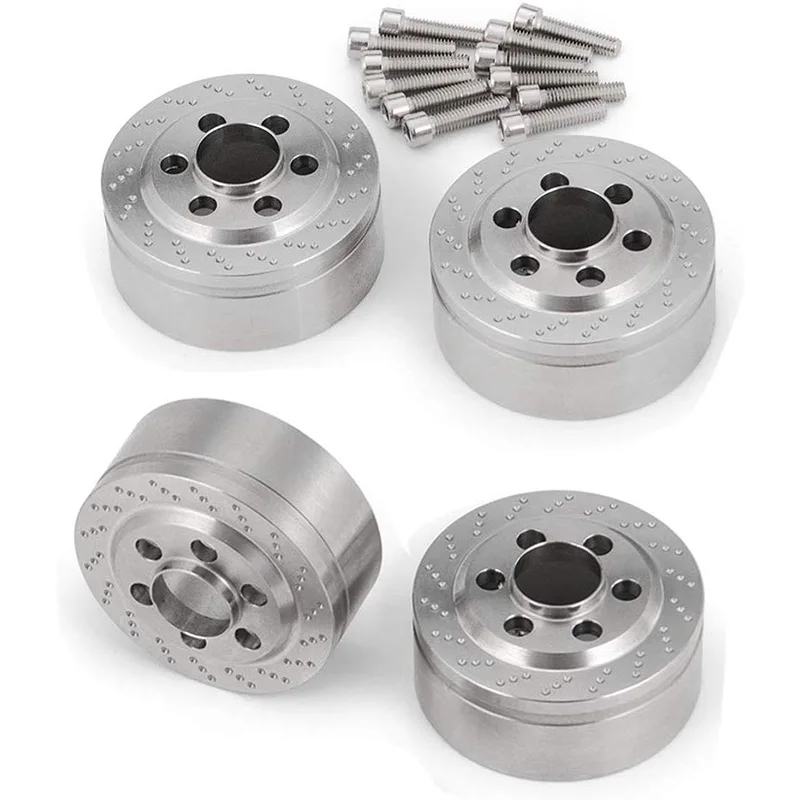 Another plus of these tires is the low noise level. In other words, high-speed winter tires are a great option for residents of big cities.
Another plus of these tires is the low noise level. In other words, high-speed winter tires are a great option for residents of big cities.
Off-road winter tires are tires with a pattern of large free-standing elements, the shape of which may be different. The tread pattern always contains many longitudinal and transverse gaps, the depth of which can reach 9-10 millimeters. The main task of such a tire is to effectively bite into rolled snow and snowdrifts. On country, rural and dirt roads, such rubber will be an indispensable option. A significant disadvantage of these tires is that they are not designed for high-speed driving and are very noisy on dry paved surfaces. In addition, they have reduced braking efficiency, and fuel consumption with driving on such tires increases.
Car tires Pirelli Scorpion Winter 265/60R18 114H
Winter tire with asymmetric pattern is another attempt to universalize the tire for various weather and road conditions.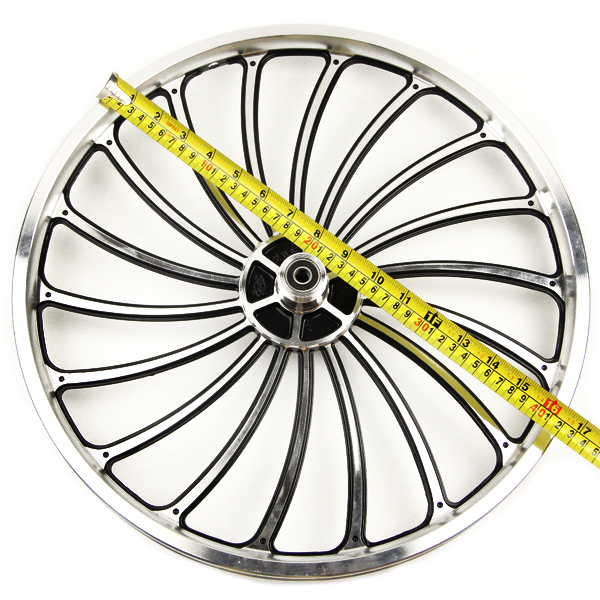 Yes, the presence of an external and internal pattern on the same tread can, in some sense, increase the grip of the tire with the road, but here it must be taken into account that the grip spot, at the same time, is reduced by half for each part. Surely manufacturers take into account all these nuances in the design. Whatever the case, the choice is ultimately up to you. Perhaps tires with an asymmetric pattern will appeal to someone.
Yes, the presence of an external and internal pattern on the same tread can, in some sense, increase the grip of the tire with the road, but here it must be taken into account that the grip spot, at the same time, is reduced by half for each part. Surely manufacturers take into account all these nuances in the design. Whatever the case, the choice is ultimately up to you. Perhaps tires with an asymmetric pattern will appeal to someone.
Choose winter tires
The main and only task of the studs is to improve grip on the road in icy conditions and on packed snow. The characteristics of acceleration and braking on such a surface with studded tires will also be higher. Such tires are definitely good in those regions where winter comes early, and low temperatures are stable until early spring.
Car tires Toyo Observe G3-ICE 225/55R17 101T
The main disadvantage of studs is that on dry pavement they greatly reduce the grip of the wheels with the road. And this is not their only disadvantage. Studded tires are absolutely not adapted to high speeds, they give the highest noise level, and at positive temperatures they completely lose their functions. Winter non-studded tires with transverse lamellas, popularly called Velcro, are now being produced. These tires have excellent traction even in icy conditions. In a word, if you were going to buy studded tires, just remember how often you had to drive on open ice? Perhaps it makes sense to change the decision in favor of non-studded winter tires.
And this is not their only disadvantage. Studded tires are absolutely not adapted to high speeds, they give the highest noise level, and at positive temperatures they completely lose their functions. Winter non-studded tires with transverse lamellas, popularly called Velcro, are now being produced. These tires have excellent traction even in icy conditions. In a word, if you were going to buy studded tires, just remember how often you had to drive on open ice? Perhaps it makes sense to change the decision in favor of non-studded winter tires.
Choose studded tires
There is one very common and very wrong opinion that four-wheel drive cars are much safer in winter. All owners of such cars need to learn a few simple truths:
 Heavy off-road vehicles will always have longer braking distances
Heavy off-road vehicles will always have longer braking distances It is well known that summer tires for an SUV look very similar to winter ones. Due to this, some motorists believe that such tires are quite suitable for winter conditions. At the same time, they do not take into account that the chemical composition of summer tires is designed for positive temperatures. In winter, however, such a tire becomes dull and completely loses its functionality. In addition, the likelihood of a tire rupture during a puncture in this case greatly increases. The only advantage of a jeep in winter is the increased cross-country ability in snowdrifts, which, you see, is not so often useful. From all this, it is easy to conclude that SUVs in winter are high-risk vehicles. In the cold season, jeep drivers need to be even more careful and cautious than everyone else.
Choose tires for SUV
For summer, picking up tires is much easier. Here you need to proceed, again, from the weather conditions that accompany most of the warm season in your region, and your driving style.
Here you need to proceed, again, from the weather conditions that accompany most of the warm season in your region, and your driving style.
Choose summer tires
Quite often, motorists discuss the question of what happens to the car if you put different tires on different axles. Yes, sometimes it happens that a kit bought for a season may not be enough, and tires of the same model can no longer be found. If you choose tires that are similar in characteristics, then, most likely, nothing bad will happen.
If you choose tires that are similar in characteristics, then, most likely, nothing bad will happen.
And if, for example, in winter in a two-wheel drive car we prefer to put winter tires only on the drive axle, then serious problems arise here. Some believe that winter tires are needed, at best, in order to accelerate faster and stop faster. You already know what happens to summer tires in winter. Hardened rubber completely loses its functionality and breaks down much faster. It is not difficult to imagine what happens to a car when, when turning, the rear wheels simply do not hold traction. Skid even at low speed is almost guaranteed. And it does not matter how much the car weighs and what kind of drive system it has.
You need to remember a simple rule: you need to put the same tires on all wheels. This is especially true for seasonal tires. A set should always consist of five wheels. Why fifth? This is a spare. Only this way and nothing else.
Run Flat are the so-called "impenetrable" tires. Tires with reinforced sidewalls that prevent a punctured wheel from "standing on the rim" while driving. Run Flat is a technology that is only used in premium tires. That is, they are, compared to conventional tires, very expensive. However, this is far from their only drawback.
Tires with reinforced sidewalls that prevent a punctured wheel from "standing on the rim" while driving. Run Flat is a technology that is only used in premium tires. That is, they are, compared to conventional tires, very expensive. However, this is far from their only drawback.
According to numerous reviews, these tires have as many minuses, and maybe more, than pluses. Firstly, you can drive on a punctured wheel no more than 80-90 kilometers, and secondly, the speed, at the same time, also cannot exceed 80 km / h. Almost all reviews from car forums about Run Flat tires come down to simple definitions: very tough, poor handling, unreliable. Again, repairing such tires is not always possible. Not every service has equipment that allows them to be restored. This is especially true of the depths. Tires from some manufacturers can only be repaired at branded car services and only once. Against this background, the main advantage of Run Flat is almost completely overshadowed by the disadvantages.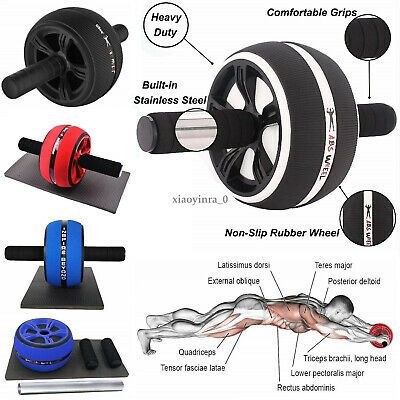
Car tires Goodyear Eagle F1 Asymmetric SUV 285/45R19 111W (run-flat)
If in most cases you still have to install a spare tire, is there any point in them? The only thing that can be confidently said in defense of such tires is that the most advanced materials are used in their production. Since tires with run flat technology belong to the premium segment, manufacturers, of course, do not save on them.
Some well-known manufacturers, as part of an environmental protection program, retread worn tires. Some brands even have subsidiaries specializing in tire retreading. How to identify a retreaded tire? By special marking. It is usually applied on the side of the tire. Most often, this is the inscription "Retread", for American tires - "Remould", for German tires - "Regummerad".
How safe and functional are these tires? Since the tread and (often) the sidewall are usually welded on at the factory, the tire really gets new life.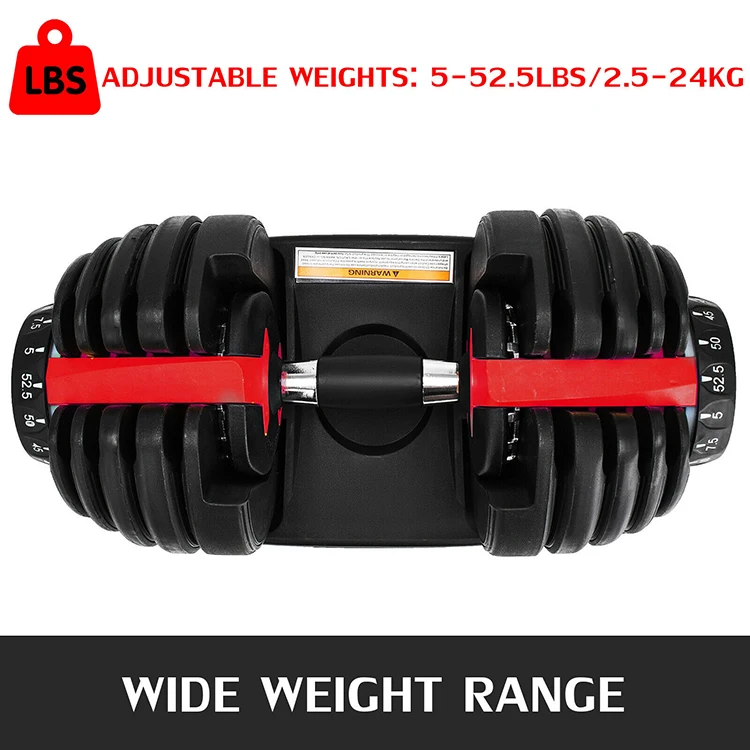 At the same time, only a frame usually remains from the old version. The tread pattern can change completely. The purchase of such a tire is always a kind of roulette game. It is easy to guess that the very fact of restoration leaves no chance of the technology that was used in the original version.
At the same time, only a frame usually remains from the old version. The tread pattern can change completely. The purchase of such a tire is always a kind of roulette game. It is easy to guess that the very fact of restoration leaves no chance of the technology that was used in the original version.
As a result, a retreaded tire is the chemical composition of rubber for one model, and the tread pattern for a completely different one. When does it make sense to install retreaded tires? Only if you prefer an extremely discreet driving style and very rarely get out of the city. Such rubber is quite capable of performing the main functions, but in no way is designed either for high speeds, or for additional loads, or for special grip and off-road properties. Retread tires are usually purchased for municipal commercial vehicles. Whether it makes sense to save and buy such tires for your car, decide for yourself.
Sometimes on tires you can see various markings, which are done with ordinary paint. Small round spots on the sidewall of the tire or longitudinal colored stripes on the tread of the tire. It is obvious that such markers are erased over time, which means that they do not carry any significant information either for the driver or for the master of the tire shop. Quite right, markers applied with colored paint are landmarks for various services that install tires on a conveyor or store them.
Small round spots on the sidewall of the tire or longitudinal colored stripes on the tread of the tire. It is obvious that such markers are erased over time, which means that they do not carry any significant information either for the driver or for the master of the tire shop. Quite right, markers applied with colored paint are landmarks for various services that install tires on a conveyor or store them.
Spots of various colors with a diameter of 5-10 millimeters on the side are marks for workers who carry out the first installation of a tire on a car. Usually such a spot during assembly is combined with a tire nipple. The number inside the geometric pattern (circle, triangle, etc.) is just a stamp marking the passage of technical control at the factory. The number usually means the personal number of the specialist who carried out the inspection.
The longitudinal colored stripes on the tread are marks that in no case mean the presence of a marriage or some kind of non-compliance with the standard.